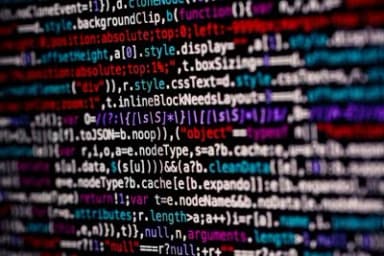Python Online Course with live classes
- Authors
 Duration: 6-8 weeks
Duration: 6-8 weeks
Python Online Course with Live Classes: Unlocking the Power of Remote Learning
In today's digital age, online learning has revolutionized education, enabling individuals from all walks of life to access knowledge and skill development conveniently. Among the multitude of subjects offered, Python programming has emerged as a prominent choice due to its versatility and widespread applications. With the advent of Python online courses that include live classes, learners can now embark on an enriching journey of coding mastery, regardless of their geographical location or time constraints.
Course Outline
Python is a versatile programming language with a wide range of applications. A comprehensive Python programming course should cover various topics to equip learners with a strong foundation and practical skills. Below is a list of essential Python programming course topics:
Introduction to Python:
History and background of Python. Installation and setup of Python on different platforms. Python Basics:
Syntax and data types (e.g., numbers, strings, lists, tuples, dictionaries).
Variables and operators. Input and output operations. Control Flow:
Conditional statements (if, else, elif).
Loops (for, while) and iteration. Functions:
Defining and calling functions.
Parameters and return values. Scope and global/local variables. Data Structures:
Lists, tuples, and dictionaries.
Sets and their applications. List comprehensions. File Handling:
Reading and writing files in Python.
Working with CSV, JSON, and other data formats. Object-Oriented Programming (OOP):
Classes and objects.
Inheritance and polymorphism. Encapsulation and abstraction. Error Handling:
Exception handling with try-except blocks.
Custom exceptions. Modules and Libraries:
Importing and using modules.
Exploring commonly used Python libraries (e.g., math, random, datetime). Working with APIs:
Making API requests using libraries like requests.
Parsing API responses (e.g., JSON data). Web Scraping:
Extracting data from websites using libraries like BeautifulSoup.
Database Connectivity:
Introduction to databases (e.g., SQLite, MySQL).
Basic CRUD (Create, Read, Update, Delete) operations with Python. Introduction to Web Development:
Basics of HTML, CSS, and JavaScript.
Flask or Django framework for building web applications. Data Analysis and Visualization:
Using libraries like NumPy and Pandas for data manipulation.
Data visualization with Matplotlib or Seaborn. Introduction to Machine Learning:
Understanding machine learning concepts.
Using libraries like Scikit-learn for basic ML tasks. Advanced Python Concepts (Optional):
Decorators. Generators. Context managers. Threading and multiprocessing. Best Practices and Coding Standards:
Code organization and readability.
Writing modular and reusable code. PEP 8 guidelines. Final Project:
Applying Python skills to build a real-world project.
Showcasing the project in a portfolio. Remember that the depth and complexity of these topics can vary based on the level of the Python programming course (beginner, intermediate, advanced) and the intended audience. A well-rounded Python course should strike a balance between theoretical concepts and practical applications to help learners become proficient Python developers.
The Rise of Python Online Courses:
Python has cemented its position as one of the most popular programming languages, thanks to its easy-to-read syntax and extensive libraries. Its applications span across web development, data analysis, artificial intelligence, machine learning, and much more. As the demand for Python skills continues to surge in various industries, online learning platforms have stepped up to meet the needs of aspiring programmers and professionals seeking to upskill.
What Sets Python Online Courses with Live Classes Apart?
While self-paced learning has its advantages, live online classes take the educational experience to a whole new level. Interacting with instructors in real-time brings a sense of camaraderie, as students can ask questions, seek clarification, and engage in discussions, mirroring the dynamics of a physical classroom. The live interaction fosters a conducive learning environment, encouraging students to stay motivated and committed to their learning journey.
Personalized Attention and Immediate Feedback:
In a traditional classroom setting, students may hesitate to ask questions, fearing judgment or falling behind. Python online courses with live classes eliminate these concerns by offering personalized attention from instructors. Learners can receive immediate feedback on their code, enabling them to grasp concepts more effectively. This iterative learning process accelerates skill development and boosts confidence.
Flexibility and Convenience:
One of the main advantages of online learning is its flexibility. Python online courses allow students to attend live classes from the comfort of their homes or any location of their choice. This flexibility is particularly advantageous for working professionals, students with busy schedules, or those residing in remote areas with limited access to educational resources. As long as there's an internet connection, students can participate in live classes without any geographical barriers.
Collaborative Learning:
Python online courses with live classes often facilitate collaborative projects and coding exercises, encouraging students to work together in a virtual team environment. This collaborative learning approach nurtures essential teamwork and communication skills that are highly valuable in real-world programming projects and professional settings.
Building a Portfolio:
Many Python online courses with live classes focus on hands-on projects that challenge students to apply their knowledge in real-world scenarios. These projects contribute to building a comprehensive portfolio, which can showcase a student's skills and accomplishments to potential employers or clients.
Conclusion: Embracing the Python Online Course with Live Classes Journey
In conclusion, the advent of Python online courses with live classes has redefined the landscape of remote learning. Aspiring programmers and professionals now have the opportunity to unlock the power of Python, guided by experienced instructors and a supportive community of peers. The flexibility, personalized attention, and collaborative nature of these courses empower students to embark on a transformative educational journey that can lead to exciting career opportunities and personal growth. Whether one is a beginner or an experienced coder, enrolling in a Python online course with live classes is undoubtedly a step in the right direction for staying at the forefront of technology and innovation. So, why wait? Embrace the Python revolution and let the learning begin!
